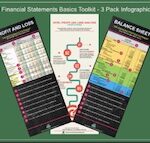Liquidity Ratios – Fuel that Runs Your Hotel Operation
Would you Know the Liquidity Ratios for your hotel?
You look puzzled, you want to know what liquidity actually means.
Most importantly, what is the big deal about knowing it, you ask.
Fair enough.
I call financial ratios as early warning systems.
Remember the car instrument panel dashboard metaphor from Part 1?
Click here to read that.
Grab this EXCEL Spreadsheet
Don’t miss our 5 Killer Hotel KPIs Dashboard
Get this exclusive Excel Template that you can customize to create your own 5 Killer Hotel KPIs Dashboard
It is like missing a key reading on your dashboard.
Say, you do not notice that the fuel in your car is running low.
The next thing that will happen is your car will stop running.
You can consider liquidity something similar to that.
If your liquidity runs low, you cannot run the hotel efficiently.
However, first, what is liquidity?
Let’s find out.
This is Part 2 of the 12 part Ultimate Guide on Hotel Financial Ratios series.
This blog post will cover:
Financial Ratios - The Early Warning System
Why do I call hotel financial ratios as an early warning system?
Well, just like the instrument panel reading, you must be on top of hotel performance.
Like running out of fuel, you should not get into a crisis situation.
And one quick way to do that is by knowing which financial ratios to monitor.
There are tons of ratios that can be calculated.
It is not possible or necessary to keep track of all of the ratios.
However, a few major categories bear watching closely.
We will be exploring these major categories in this Ultimate Guide.
Financial Ratios by Major Categories
Financial ratios can be grouped into 5 major categories
- Liquidity Ratios
- Solvency Ratios
- Activity Ratios
- Profitability Ratios
- Asset Management Ratios
Let us take liquidity first.
Recall what I said earlier.
If your liquidity runs low, you cannot run the hotel efficiently.
Time to dive in and understand the liquidity concept.
Liquidity - The Fuel that Runs Your Operation
Liquidity simply means cash.
Not exactly but let me explain.
It means the ability of an asset to turn into cash.
The higher the cash balances in a balance sheet, the more liquid the position.
Such assets are called liquid assets.
Liquid assets generally refer to current assets.
Want to know more about current assets?
Read the Ultimate Guide on Hotel Balance Sheet Basics.
Back to liquid assets.
For example, Current Assets (see below) are normally these three common types:
- Cash and Bank Balances
- Accounts Receivable
- Inventories
Current Assets can be of other kinds too.
However, these three feature prominently in most hotel balance sheets.
Now let us learn what Liquidity Ratios are.
Liquidity and Current Assets
Liquidity Ratios are ratios that measure how liquid hotel current assets are.
In other words, how quickly can the current assets be turned into cash.
Let me bring in again the common types of current assets in a hotel balance sheet:
- Cash and Bank Balances
- Accounts Receivable
- Inventories
The above list has a particular order to it.
This order is mandated by the Uniform System of Accounts.
All hotel balance sheets must follow this mandate.
Current Assets need to be listed in the order of their liquidity.
In other words, the most liquid asset must be first and so on.
Notice how this is the case in the above list.
Cash and Bank Balances are the most liquid of current assets.
This is because they are already in cash form.
Next comes Accounts Receivable.
Accounts Receivables are sales made but cash not yet collected.
Finally, we have Inventories.
Inventories are stocks of goods that will be sold or consumed.
For example, food and beverage supplies are part of inventories.
Food and Beverage items will be issued out from inventories and sold in the hotel’s restaurants.
The inventory thus sold will become revenue.
Accounts Receivables Vs Inventories
Why are Inventories listed after Accounts Receivable?
Because Accounts Receivable represent sales already made but money not collected.
On the other hand, inventories are yet to be sold and hence not as liquid.
Inventories are considered the least liquid of current assets.
Now, that we know common types of current assets, let us visit the major categories of liquidity ratios.
Liquidity Ratios
We will examine 3 major categories of Liquidity Ratios in this Ultimate Guide.
Take a look at the infographic below.
These are:
- Acid Test Ratio
- Accounts Receivable Turnover Ratio
- Working Capital
We will be understanding why these are the most important.
In the early warning system, these rank the highest.
We will be discussing Acid Test Ratio in this post.
The other two will follow in forthcoming posts.
Acid Test Ratio
What is Acid Test Ratio?
The Acid Test Ratio is actually a revised form of the more common Current Ratio.
You could say that Acid Test Ratio is a better indicator than the current ratio.
Let’s see why and how.
Current Ratio is simply the ratio of Current Assets to Current Liabilities.
The formula is:
Current Assets / Current Liabilities
Quick recap of what current assets and current liabilities are:
Assets used up within a financial year are current assets.
Liabilities payable within a financial year are current liabilities.
Take a look at the Current Assets and Current Liabilities of Paradise Hotel below:
The Current Ratio however suffers from a huge defect.
It can show an incorrect picture.
What do I mean?
For example, inventories are considered the least liquid of current assets.
If a hotel’s current assets are predominantly inventories, it may show a false picture of liquidity.
Is your hotel holding a lot of inventories?
Check them out.
In the above Paradise Hotel Balance Sheet, note that Current Assets total $221,000.
Current Liabilities total $214,000.
So, Current Ratio is Current Assets / Current Liabilities = $221000 / $214000 = 1.03.
Current Ratio is barely above 1.0.
We will see why this is a problem shortly.
Note that Inventories total $17,000 in Paradise Hotels current assets.
And Inventories are the least liquid of current assets.
How do we sort this issue out?
Enter the remedy for this: Acid Test Ratio.
Acid Test Ratio removes inventories from the current assets in its calculation.
And leaves the most liquid assets to be compared to Current Liabilities.
In other words, the formula is:
Current Assets Less Inventories / Current Liabilities.
Let us now see the example using the Paradise Hotel shown above.
Acid Test Ratio Example
The Current Ratio for Paradise Hotel as of 31.12.2018 is:1.03
Current Assets / Current Liabilities OR
$221000 / $214000 = 1.03
Removing inventories of $17,000 from Paradise Hotel Current Ratio, the Acid Test Ratio is:
Current Assets Less Inventories / Current Liabilities OR
$204000 / $214000 = 0.95
Note how Current Liabilities are now higher than the most liquid current assets.
However, you would only know this if you calculated Acid Test Ratio.
Just calculating Current Ratio would have given you an incorrect picture.
Check out your hotel's current ratio and then verify it with the Acid Test Ratio.
How is Acid Test Ratio useful?
In the case of the Paradise Hotel, you discovered that Acid Test Ratio is below 1.0.
That is not a good situation to be in.
You are getting an early warning from this ratio.
Liquidity is one of the key measures of short term solvency.
In other words, the ability to pay current liabilities with current assets.
Is the hotel able to cover its short term liabilities with its short term assets?
Or, how liquid are the hotel’s current assets?
If current liabilities are not covered by current assets less inventories, the hotel will suffer from a cash crunch.
This is because inventories are not sold yet.
So, they are not able to provide the cash necessary to pay liabilities.
This is the reason the Acid Test Ratio is so critical.
How to Read Acid Test Ratio
Current Ratio must always be verified with the Acid Test Ratio.
This is what we did with Paradise Hotel above.
In other words, calculate the current ratio but check with the Acid Test.
This is to ensure that inventories are not skewing the liquidity.
Acid Test Ratio below 1.0 is a warning that current assets are not very liquid.
They may not be able to pay the current liabilities.
Inventories & Pre Opening Hotels
For hotels which are in pre opening stage, inventories tend to be higher.
This is because the hotel has not started operating.
Par Stock actual consumption is not established since hotel has not opened.
Consequently, it may not have an accurate grasp of sales volume.
Moreover, the hotel will want to avoid a stock out situation initially.
Therefore, it will keep higher than needed inventory levels.
You could conclude that it is even more critical for pre opening hotels to calculate Acid Test Ratio.
Chapters in this Ultimate Guide on Hotel Financial Ratios
This Ultimate Guide is a twelve part series which will cover the following key areas:
- CHAPTER 1 of 12 - Hotel Financial Ratios - Why should you care?
- CHAPTER 2 of 12 -Liquidity Ratios Intro - Acid Test Ratio
- CHAPTER 3 of 12 -Liquidity Ratios - Accounts Receivable Turnover Ratio
- CHAPTER 4 of 12 -Liquidity Ratios - Working Capital
- CHAPTER 5 of 12 -Solvency Ratios - Net Worth
- CHAPTER 6 of 12 -Solvency Ratios - Debt Equity Ratio
- CHAPTER 7 of 12 -Activity Ratios - Inventory Turnover Ratio
- CHAPTER 8 of 12 - Profitability Ratios Intro - Gross Operating Profit
- CHAPTER 9 of 12 - Profitability Ratios - Return on Investment Ratio
- CHAPTER 10 of 12 - Profitability Ratios - Return on Equity Ratio
- CHAPTER 11 of 12 - Asset Management Ratios Intro - Asset Turnover Ratio, RevPAR
- CHAPTER 12 of 12 - How to Identify Warning Signs in Hotel Financial Ratios
Sign Up for Speed Tips - Learn in Minutes!
Want to Learn in Minutes?
Sign Up for Speed Tips - Learn in Minutes Newsletter for tips, strategies, secrets straight to your InBox!
Related Posts
14







